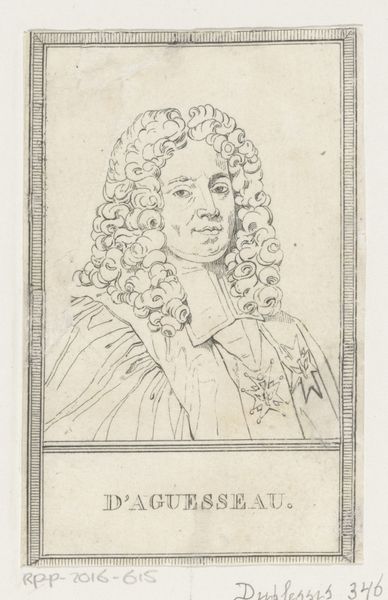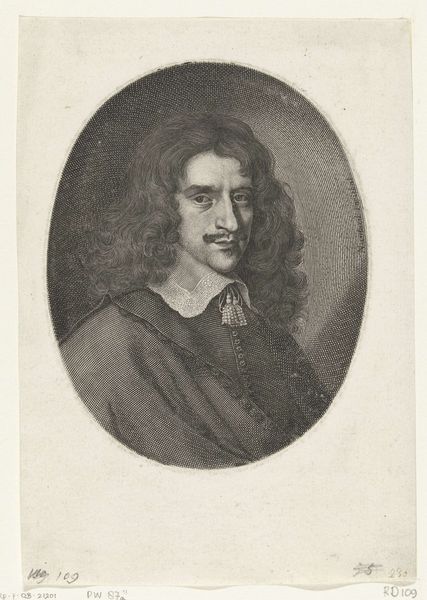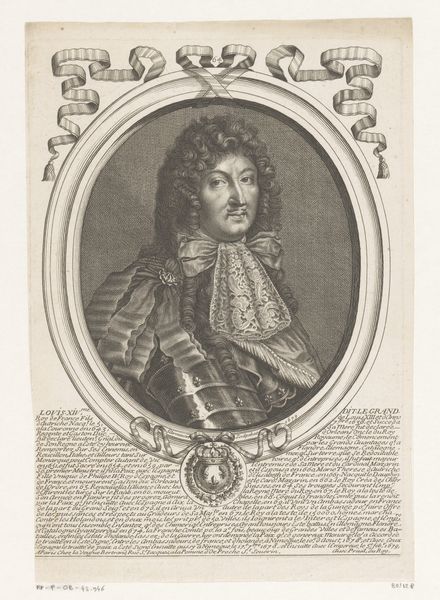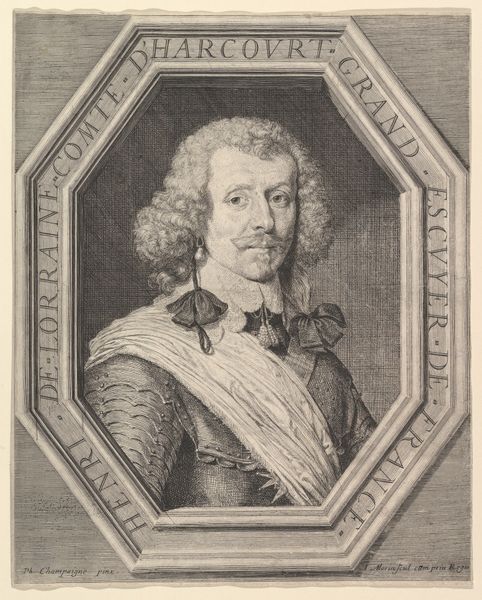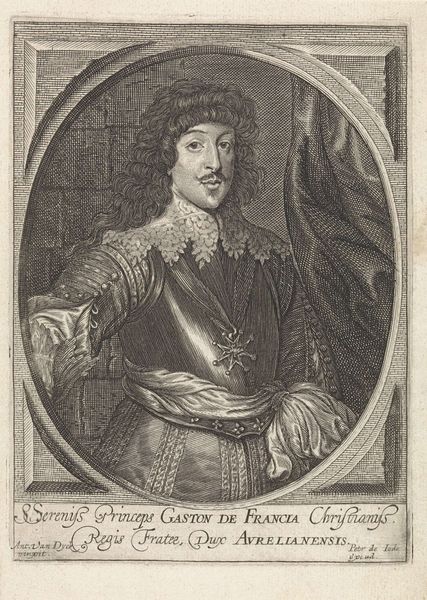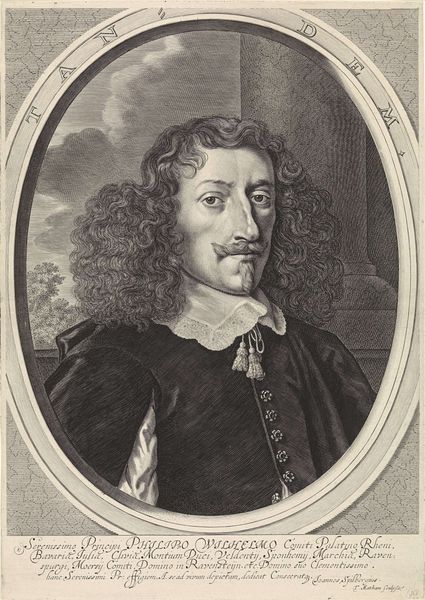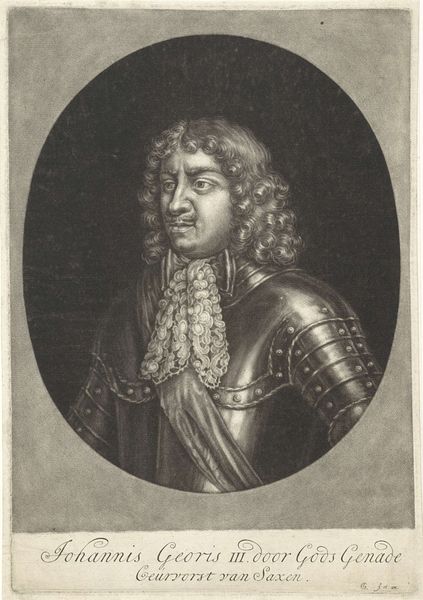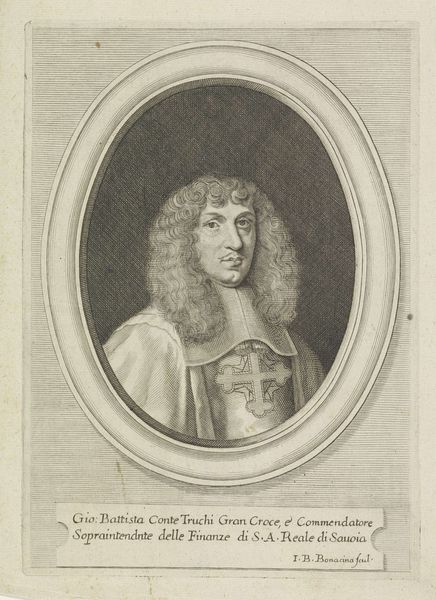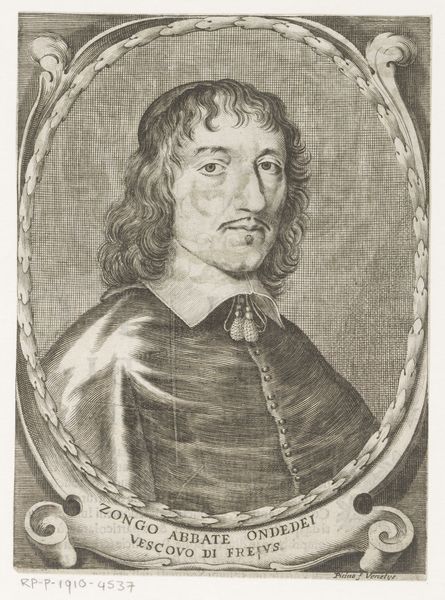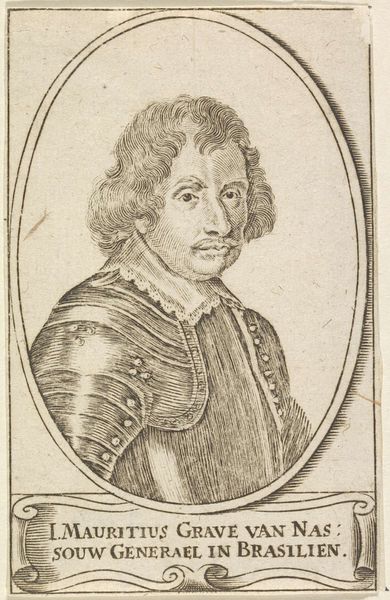
Dimensions: height 109 mm, width 58 mm
Copyright: Rijks Museum: Open Domain
Editor: This is "Portret van George Monck, hertog van Albemarle," an engraving dating from around 1770 to 1826, currently held in the Rijksmuseum. The intricate line work really captures the sitter's elaborate attire. How do you interpret this work within its historical context? Curator: It’s crucial to consider what portraits like this communicated in their time. George Monck, a key figure in the Restoration of the English monarchy, is presented here through a very specific visual language. The elaborate dress, the confident gaze - what do these visual cues tell us about the power dynamics and social structures of 18th-century England? Editor: I suppose it's a demonstration of power and status, a celebration of the aristocratic class? Curator: Precisely. Think about the intended audience, likely members of the elite classes. How does this image reinforce their existing social hierarchy? The artist wasn't simply creating a likeness, but actively participating in the construction of historical narratives. Whose stories get told and who is left out, and how does that inform what is "history"? Editor: So the portrait serves not just as a record, but also as a piece of propaganda, in a way? Curator: In a sense, yes. It’s about solidifying a certain image of authority, maintaining the status quo, and perpetuating a specific, highly curated, vision of English history. Considering these elements opens us to deconstructing power dynamics. Editor: I see! I hadn't considered it from that perspective. I was too focused on the aesthetics. Curator: The aesthetic choices are never neutral. Every line, every detail, contributes to a larger social and political narrative. This understanding enables a deeper engagement with both art and the past. Editor: Thank you! This deeper understanding of how power dynamics inform the artwork really expands my appreciation.
Comments
No comments
Be the first to comment and join the conversation on the ultimate creative platform.
